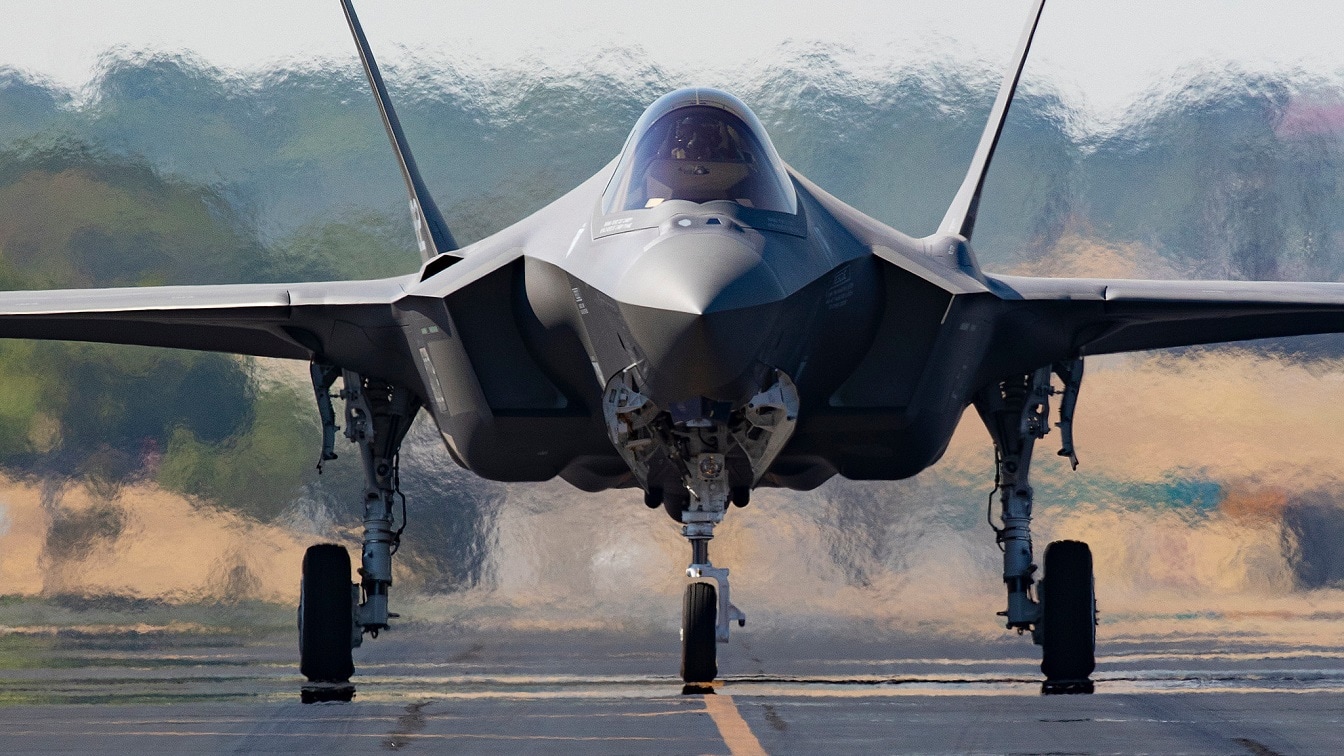Is the F-35 really able to dogfight or not? Just like many things involving 21st warfare, the answer is not simple but can depend on many, many different factors and actual combat conditions: Back in 2015, a report emerged about a series of dogfight trials between America’s newest stealth fighter, the F-35, and the nation’s workhorse 4th generation platform, the F-16 Fighting Falcon, and the results were damning. The F-35, according to the report, was no match for its own predecessor, losing scrap after scrap between the two jets. But, as we’ve come to find out since—that report was missing some significant context… and the F-35 isn’t nearly the slouch it’s been made out to be.
Today, fighter pilots frequently dismiss the importance of things like Air Combat Maneuvering (the technical term for dogfighting) when asked, highlighting modern sensor reach and extremely effective long-range air-to-air weapons as reasons you won’t see theatrics like Maverick’s in a real cockpit any time soon. But make no mistake, modern fighters have to be able to win fights in the air… and the truth is, most pilots heading into such a fight would pick the F-35 every time over the nimble, but much older, F-16.
The F-35 is slower and less maneuverable than many 4th generation fighters
Platforms like the F-35 lean heavily into the prevailing wisdom that dogfights are a thing of the past, prizing data fusion and low observability over hot-rod performance. In fact, the F-35B and C, specialized for service aboard amphibious assault ships and aircraft carriers, are limited to short supersonic sprints of just 60 seconds or less in order to protect the delicate radar-absorbent coating layered over the airframes. Meanwhile, Cold War speedsters like the F-16 can creep up toward Mach 2 when flying without ordnance, and the legendary air superiority F-15 can do better than Mach 2.5 when it needs to hustle.
This shift in approach has led many to question just how effective America’s newest fighters would be in a near-peer conflict against highly capable, but older fighters. Russia’s 5th generation Su-57 may not be all that impressive, but the nation’s 4th generation fighters, like the highly capable Su-35, are something to behold. Their thrust vectoring aerobatics make for a much more dynamic show than the F-35’s “speak softly and carry a big stick” design, but what does that really mean for air combat?
The details of the infamous 2015 F-35 vs F-16 report
In 2015, David Axe over at War is Boring published the details of a report he obtained outlining how the F-35 got its tail kicked over and over again by the F-16. The exercises reportedly took place on January 14, 2015, over the Sea Test Range, which is a stretch of the Pacific Ocean near Edwards Air Force Base, California.
The fight was between a modern F-16D Block 40 and an Air Force F-35A. The F-35A requires a full-length runway for take-offs and landings (unlike its STOVL and carrier-capable siblings). The F-35A is also the only one of the three Joint Strike Fighter iterations to carry an onboard 25mm GAU-22/A four-barrel Gatling gun, making it best suited for the close-quarters dogfights these exercises were meant to replicate.
“The evaluation focused on the overall effectiveness of the aircraft in performing various specified maneuvers in a dynamic environment,” An unnamed F-35 test pilot wrote in the report.
“This consisted of traditional Basic Fighter Maneuvers in offensive, defensive and neutral setups at altitudes ranging from 10,000 to 30,000 feet.”
The F-35 carried no external munitions or fuel tanks, as it wouldn’t in combat in order to maintain its stealth profile, while the F-16 was carrying external tanks. In Axe’s report, he identifies this as an advantage the F-35 took with it into the test, though the truth is, it’s an advantage the platform would almost certainly carry with it into any fight with a 4th generation aircraft, as all fighters of that era carry their weapons externally.
Once the fighting kicked off, the F-35 seemed to immediately struggle, proving unable to line the Viper up in its sights for notional gun runs due to its “sluggish” performance.
“Even with the limited F-16 target configuration, the F-35A remained at a distinct energy disadvantage for every engagement,” the unnamed test pilot reported after the exercise.
In offensive and defensive duals, the F-35 was consistently found wanting due in large part to its inability to get its nose pointed at its opponent.
“Instead of catching the bandit off-guard by rapidly pull aft to achieve lead, the nose rate was slow, allowing him to easily time his jink prior to a gun solution,” the JSF pilot wrote, effectively saying the F-35’s slow nose rate allowed the F-16 to remain elusive.
That same nose rate issue came back to haunt the F-35 when the tides were turned, allowing the F-16 to quickly gain a firing solution while the Joint Strike Fighter struggled to get itself out of the way of the Viper’s cannon.
The only way the F-35 could win a dual with the Viper, the report suggested, was by putting itself into an extreme maneuver that gave it the chance to point its nose at the opponent to deliver a missile shot, but doing so, the report explained, robbed the F-35 of airspeed, leaving it vulnerable to follow-on attack.
“The technique required a commitment to lose energy and was a temporary opportunity prior to needing to regain energy … and ultimately end up defensive again,” the pilot wrote.
The report, and accompanying context from Axe, seem to suggest the F-35 is seriously inferior to older jets. But it wasn’t until later that the real details about this series of exercises emerged, and it dramatically changed the way these fights should be characterized.
People who hate on the F-35 ate the report up… but there was already evidence that the test wasn’t all it’s cracked up to be
The report seemed to confirm what many already believed about Lockheed Martin’s new Joint Strike Fighter, playing into the increasingly popular narrative that the trillion-dollar (plus) F-35 program has resulted in an unimpressive aircraft that fails to live up to expectations.
The truth is, the report was indeed real and the F-35 really did fail to provide a worthy opponent in those very specific trials… But that doesn’t mean the report and ensuing press coverage didn’t seriously mislead the public about the F-35’s actual capabilities, let alone how it would really fare in a fight with the nearly 50-year-old F-16.
The first sign that something was amiss came about halfway through the original article, where Axe explains how the F-35 was able to use that specific maneuver to orient its nose as the F-16 to engage it with missiles and score its only win. It sounds like the pilot was working hard to get the aircraft to find its target… but the F-35 notably doesn’t need to orient its nose at a target in order to lock onto it with missiles.
In fact, the F-35 can famously shoot “off-boresight,” meaning it can target and fire at enemy aircraft even when they’re flying behind it.
So what gives? Why would an aircraft with such advanced sensor fusion capabilities that it can literally let the pilot look through it when targeting opponents practically anywhere struggle to aim its nose at an F-16 at all?
The F-16 was squaring off against an F-35 with both wings digitally tied behind its back
The report’s damning representation of the F-35 wasn’t based on the jet’s actual capabilities at all, as it would turn out.
The F-35 airframe used in the exercise, AF-2, was among the earliest F-35s delivered to the Air Force—and it carried software limitations specifically intended to prevent the pilot from pushing the jet anywhere near its structural limits. The F-16D it was flying against, of course, had no such restrictions. But that’s not all.
In a subsequent piece penned by Kris Osborn for the National Interest, the reasons for the F-35’s poor dogfighting performance began to take shape.
“The F-35 involved was AF-2, which is an F-35 designed for flight sciences testing, or flying qualities, of the aircraft. It is not equipped with a number of items that make today’s production F-35s 5th Generation fighters,” F-35 JPO office said in a written statement.
So why wasn’t the F-35 able to aim and fire notional missiles at its F-16 opponent without pointing the nose of the fight directly at it? The answer is simple—the F-35 that participated in these drills didn’t have all of the systems it needed to leverage its own capabilities.
The AF-2 was “not equipped with the weapons or software that allow the F-35 pilot to turn, aim a weapon with the helmet, and fire at an enemy without having to point the airplane at its target.”
The AF-2 F-35 used in these dogfights also lacked the radar-absorbent coating that’s essential for the stealth profile of these jets. In fact, current radar-absorbing materials (RAM) are rated to absorb upwards of 70-80% of inbound electromagnetic energy (of radar waves), making it much more difficult for the F-16 to track the F-35 on radar.
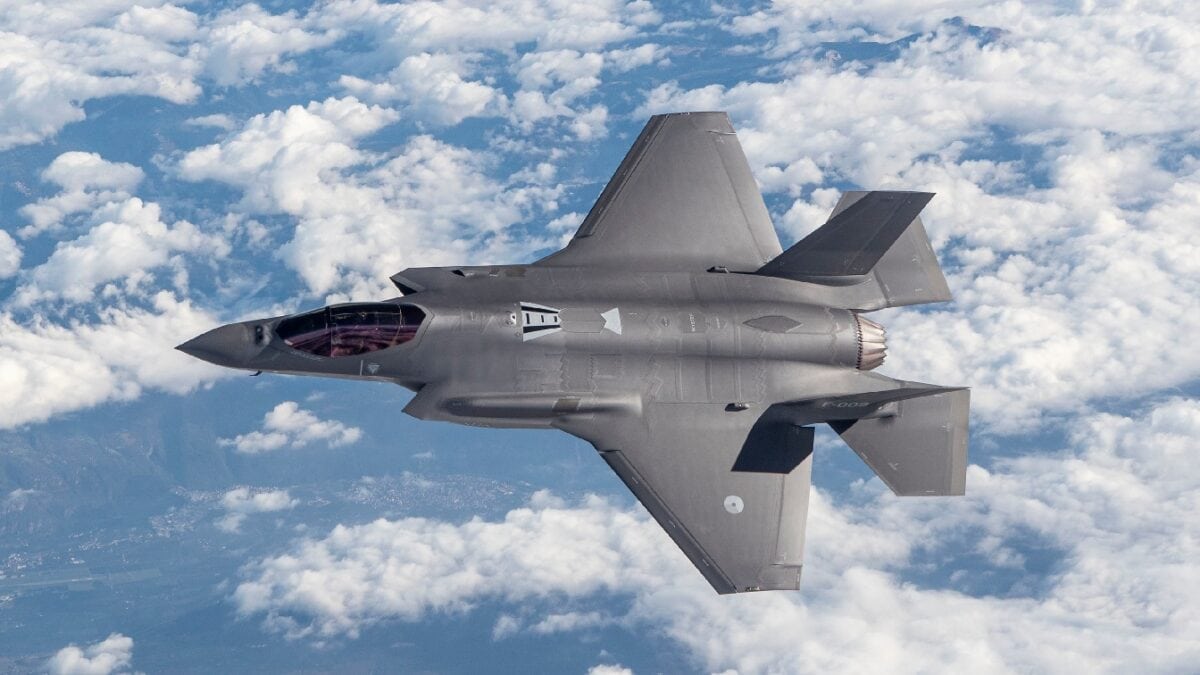
F-35 Joint Strike Fighter in the Netherlands. Image Credit: Creative Commons.
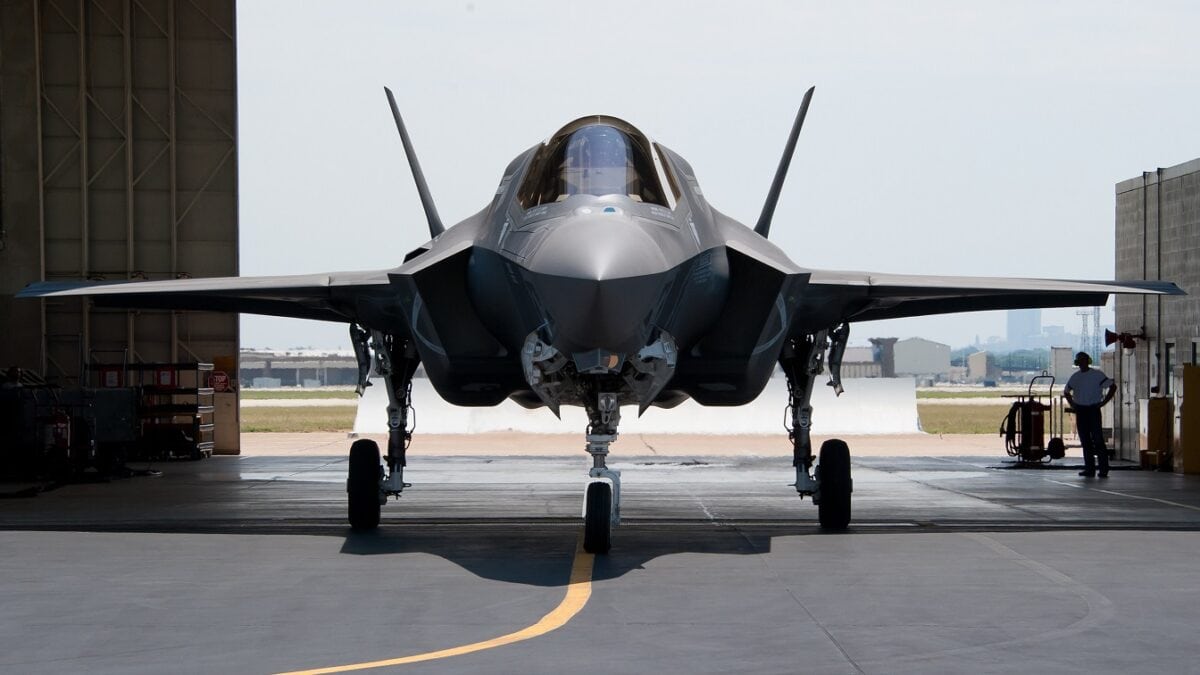
F-35 Stealth Fighter. Image Credit: Creative Commons.
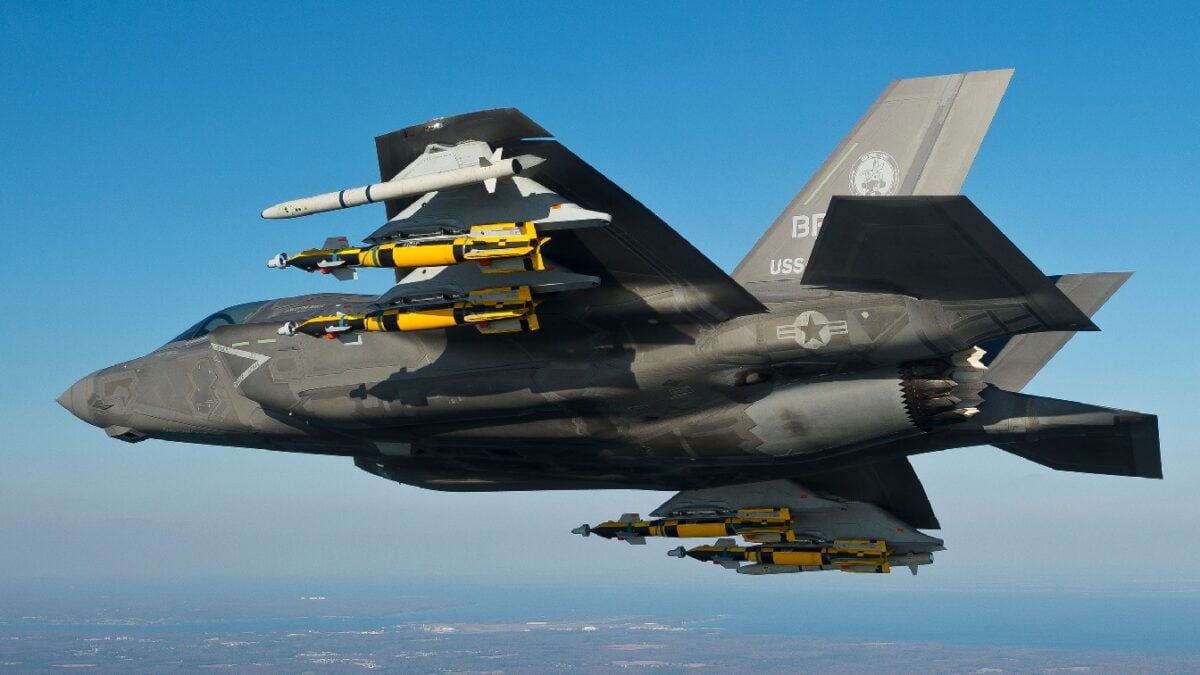
F-35 Stealth Fighter. Image Credit: Creative Commons.
In other words, the F-35 that fought in these exercises was flying to only a percentage of its full capabilities in terms of aerobatics, targeting, and situational awareness.
So, who would really win a fight between the F-16 and F-35 in combat today?
If an F-35 and an F-16 found themselves on opposing sides of a conflict and suddenly within visual range of one another, the tight-turning Viper might have a chance at scoring a kill on the F-35, but that’s not the same thing as saying the F-16 is better. In combat, anything can happen, and things like pilot error or something as simple as position on approach can give less advanced jets an advantage they can press…
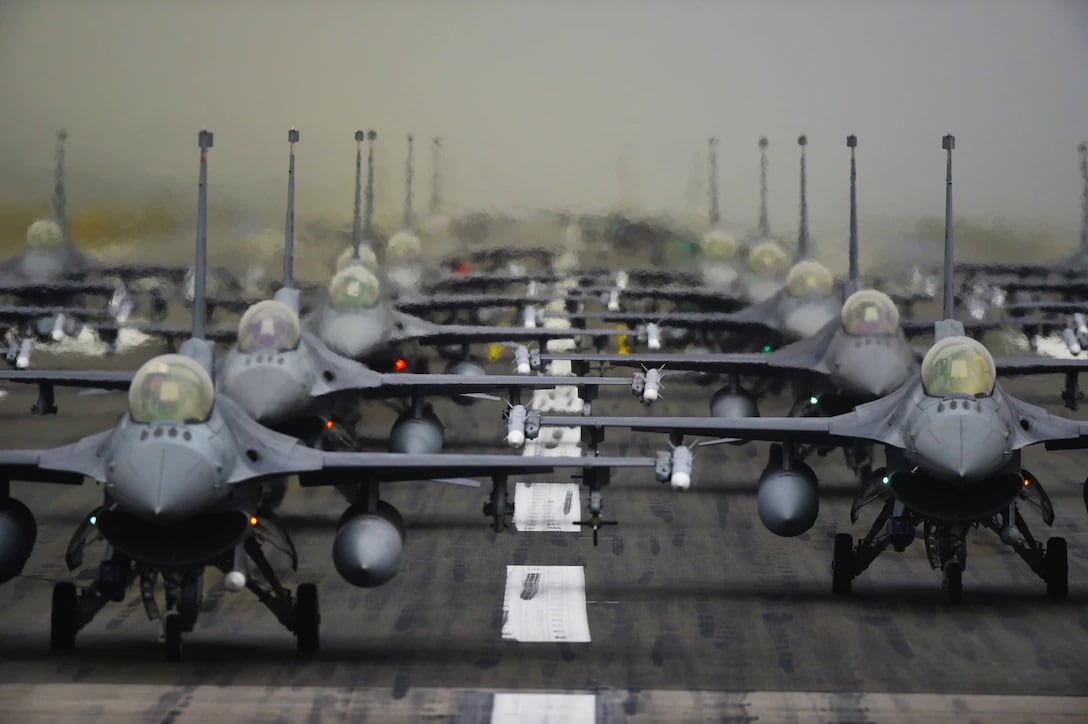
U.S. Air Force 52nd Fighter Wing F-16 Fighting Falcons line up in formation on the runway for a show of forces display at Spangdahlem Air Base, Germany, Oct. 1, 2019. The 52nd FW has a suppression of enemy air defenses mission and must be able to respond to emerging competitors. (U.S. Air Force photo by Staff Sgt. Joshua R. M. Dewberry)
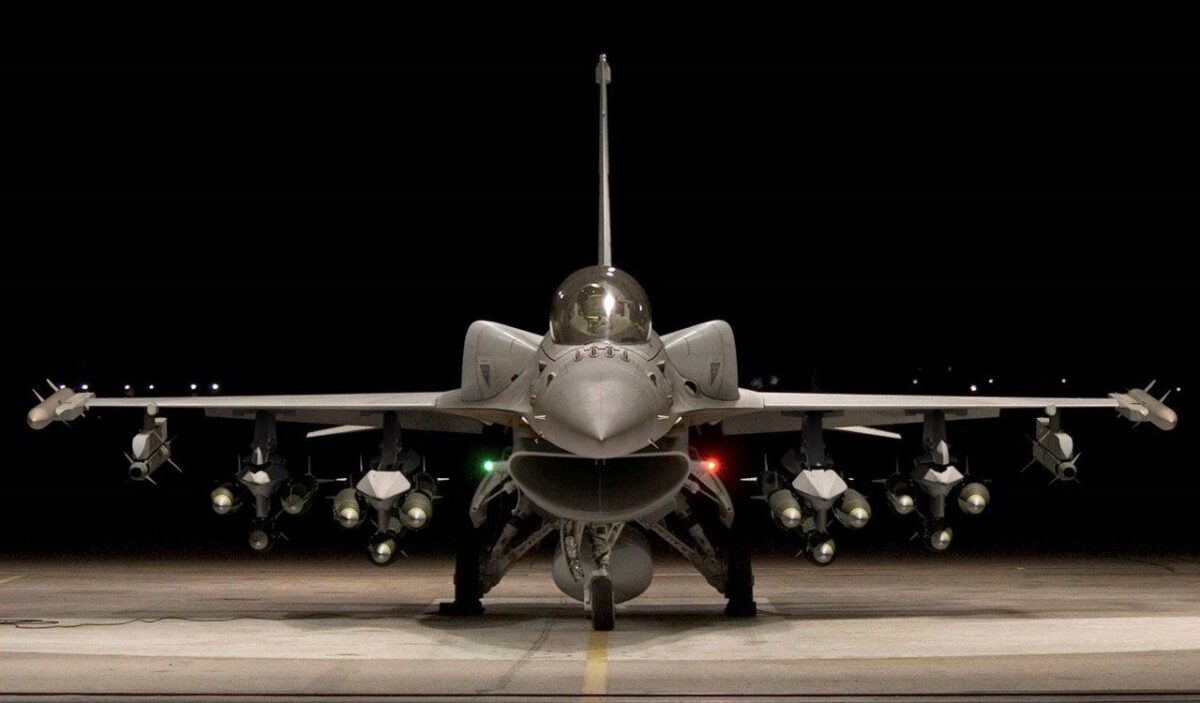
Image: Lockheed Martin.
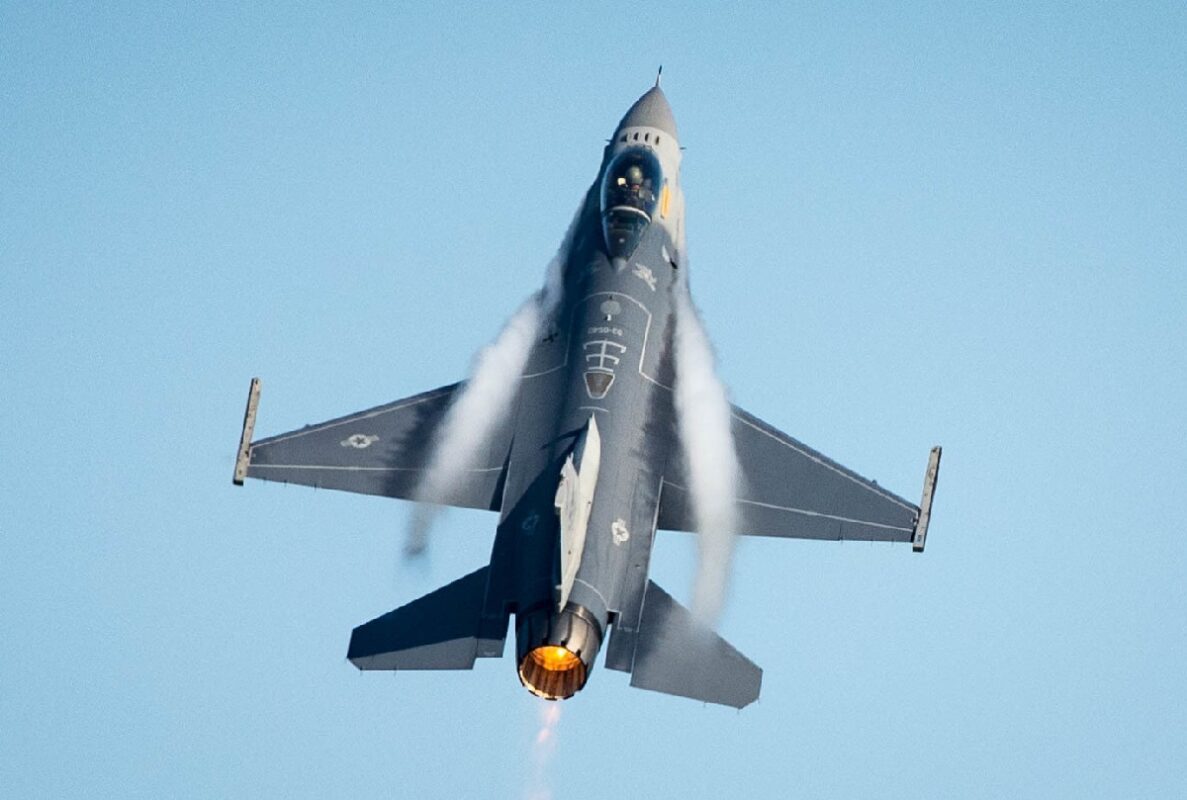
Maj. Garrett Schmitz, pilot for the F-16 Viper Demonstration Team, performs aerial maneuvers with an F-16 Fighting Falcon at Joint Base Langley-Eustis, Va., May 16, 2019. Air Combat Command pilots must complete rigorous training and receive certification from four levels of U.S. Air Force leadership before they can earn the title of Demonstration Team Commander. (U.S. Air Force photo by Airman 1st Class Marcus M. Bullock)
But in actual combat conditions, it’s far more likely that the F-35 would down any F-16 on the playing field before the Viper pilot even knew it was there. It’s hard to win at air combat when your parachute is open before you even realize the fight’s on.
Alex Hollings is a writer, dad, and Marine veteran who specializes in foreign policy and defense technology analysis. He holds a master’s degree in Communications from Southern New Hampshire University, as well as a bachelor’s degree in Corporate and Organizational Communications from Framingham State University. This first appeared in Sandboxx.

